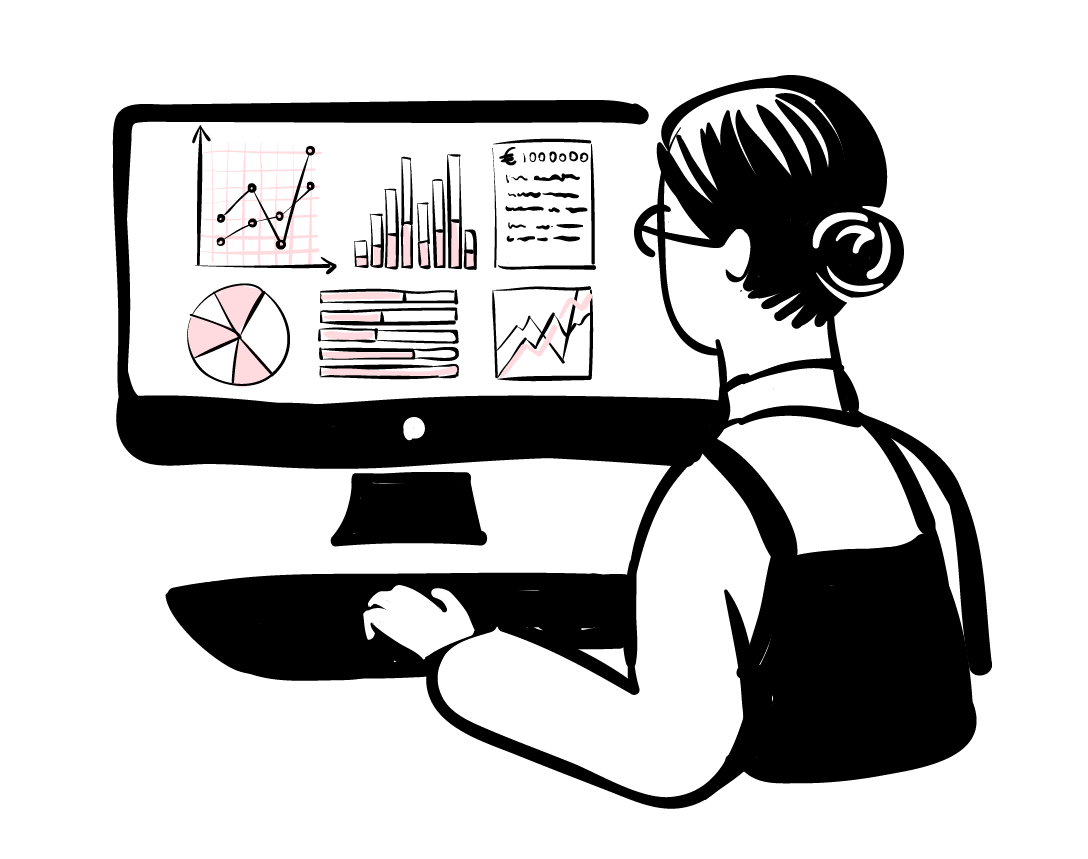Top 12 accounting automation tools of 2025


Fresh insights from 2,650 finance decision-makers across Europe
Accounting automation is here to take the day-to-day admin work off your finance team’s plate so they can focus on higher-value tasks instead.
Keep reading and learn what accounting automation is, and browse our top picks of accounting automation tools that can help your business get its finances in order - fast.
|
Key takeaways:
|
What is accounting automation?
Accounting automation is technology that simplifies, streamlines and automates repetitive, time-consuming financial tasks that are usually handled by people – automatically, accurately and much faster than manual workflows.
Not to get too technical, but accounting automation software processes financial data, applies pre-set rules or AI-powered logic and integrates with your existing accounting, ERP or expense management systems to keep everything running smoothly behind the scenes.
In simple terms, it reduces human error, saves valuable time and delivers real-time financial insights without the need for constant manual input.
Accounting automation tools are designed to take the day-to-day admin work off your finance team’s plate so they can focus on higher-value tasks like analysis, forecasting and decision-making instead.
Here are some examples of what accounting automation can handle:
- Invoice automation
- Processing payroll
- Tax reporting
- Expense processing
- Generating financial reports
Some accounting automation solutions are powered by RPA software technology – especially when connecting disconnected systems or automating manual, rule-based workflows.
You can read more about that here: RPA and accounting automation 101

Top 12 accounting automation tools of 2025
There are a lot of apps to choose from, but there are some that we think all accounting and financial professionals should have at least one or two of in their arsenal.
Here are our top twelve choices for accounting automation tools in 2025:
1. Pleo
Pleo automates expense reports to streamline the entire business spending process, from the moment something is purchased to it being reconciled in your accounts.
Accounting practices can empower their clients with smart company cards, and as a result, there’s less paperwork, less back and forth and less end-of-month stress. You can also use Invoices, an invoice management system that allows you to track, pay and account for every bill your team receives – at no extra cost.
2. QuickBooks Online
QuickBooks Online is a solid starting point for automating your accounting processes. The solution offers simple online accounting so you can organise your business finances in one space, from expenses to taxes to payroll.
You can easily sync your favourite business apps, and people are raving about their customer support too.
Pssst! Pleo has a direct integration with QuickBooks to export all your spending data in just one click.
3. Wave
Wave is an excellent choice for laying the foundation of your processes if you’re just starting out. They offer a free version that supports simple bookkeeping with an easy to use app and ecosystem, making tax time and staying on top of cash flow a breeze.
4. Xero
One of the more popular choices for accountants and small businesses is Xero. It’s ‘designed to make life better for businesses and their advisors and help them grow and thrive’. It’s easy to see why.
A key feature we’d like to point out is the ‘Single Ledger’, aka the single data set that both the business and you as a bookkeeper or accountant can work from. This means you’re both seeing the same set of data at the same time, which is key when growing a business.
Pssst! Pleo has a direct integration with Xero to export all your spending data in just one click.
5. HiBob UK Payroll
Managing payroll always comes with its challenges, no matter how advanced your finance or accounting team is.
HiBob UK Payroll (formerly Pento) is a cloud-based payroll system integrated within HiBob's Core HR platform. It automates everything from tax calculations to HMRC payments. The system allows payroll processing to be done in minutes and gives you clear overviews of all your staff, the hours they’ve worked and their earnings – so you’ll know just how much is leaving the company account on payday.
6. AuditFile
Audits are complex, so why not use a digital tool to lighten the load?
AuditFile is a cloud-based solution with top-notch security that helps accountants, as well as internal accounting teams, perform efficient audits, reviews and compilations. Track a business's metrics from top to bottom, easily generate a financial statement and more.
7. Sage
Another well-known accounting automation tool used by businesses of many sizes and across industries is Sage. With a quick and simple set-up, this tool is a great choice for businesses or freelancers that need the basics of accounting, like invoicing and bill tracking at a decent price.
Pssst! Pleo has a direct integration with Sage to export all your spending data in just one click.
8. NetSuite
Whereas Xero and QuickBooks have small to medium-sized businesses more top of mind, NetSuite is built for larger, scaling companies. It’s rated as one of the top ERPs (enterprise resource planning) tools out there. With real-time insights, streamlined processes and a 360-degree view of performance across the business, this platform also integrates with many other key tasks of CFOs.
Of course, it automates and streamlines core accounting responsibilities, but the full package includes HR and admin software, supply chain management, sales and CRM activity.
But, this does make the solution pretty complex and requires dedication and time to get up and running properly.
9. BlackLine
With a focus on midsize companies, BlackLine is a smart choice if you have ambitious growth goals in the near future and are looking for efficiency.
This self-described ‘modern accounting partner’ provides flexibility, security and scalability as your company grows by eliminating manual work with automatic month-end reconciliation, including credit card spend.
10. Freshbooks
Another market leader in cloud-based accounting software, Freshbooks.
Freshbooks allows you, the accountant, the bookkeeper, or tax professional to be the expert and optimises your client workflows. Allowing your focus more on that advisory role, nurture your client relationships and nurture your practice features like professional invoicing, time and project tracking and automated payments.
11. Zapier
Maybe you’re asking yourself what’s the best way to connect all these tools to ensure your accounting process is running smoothly across all platforms – good thing there’s Zapier.
Zapier moves information automatically between your apps, with no coding required. You can even build your own workflows so you’ll never miss, say, an important document that’s attached to an email. You can use the tool to set up a workflow where Gmail attachments are automatically synced to DropBox, and then a notification pops up in Slack. Just like that!
12. Karbon
We know the tools that give us a snapshot of our company finances, but what about a snapshot of the accounting team?
Karbon provides a collaborative workspace to manage workflows and communicate across teams to ensure you always deliver exceptional client work.
With its dashboard, you can track the progression of each task and easily identify any possible bottlenecks. You can also create workflow templates, to ensure processes don’t break and the quality of your output isn’t affected by growing teams. And admin work is automated, so no future client jobs slip through the cracks.

What should you look for in an RPA tool?
There are many RPA tools on the market – but not all are the right fit for your business. Here are some things to consider when choosing your RPA solution:
Is it cloud-first?
Cloud-first tools are usually accessible on any device with an internet connection. They’ll often have dedicated mobile and desktop apps and you may be able to use some directly through a browser.
The fact that all the information is stored in the cloud means it is easy for business owners to give access to the tool to those in the company that need it, as well as to their accountant. The downside is that as the number of users with access to the tool increases, so too may the cost of the product.
Is it scalable and adaptable?
Scalable and adaptable tools grow with your business, meaning your company won’t be held back by software that is no longer fit for purpose.
Many of the tools above offer options for organisations at different stages of growth, from micro-businesses with one employee to medium-sized companies. That said, some tools will be more suited to small companies, and others to firms with hundreds of employees.
Does it integrate with other tools?
No single tool will fulfil all of your business needs on its own. Because of this, it’s important that all your tools can communicate and work together to simplify your processes.
Some accounting tools, like NetSuite, are part of a larger set of enterprise products and may be best for companies already in their ecosystem.
What’s the user experience like?
Employees are more likely to use tools that provide an excellent user experience and a simple interface. The less time you have to spend getting those who work for you up-to-speed on new tools, the quicker you’ll start to reap the benefits they bring.
Of course, even the best and simplest tools will have a learning curve, especially for the more advanced features.
What are the support and community like?
Choosing tools with efficient support teams can ensure that should anything go wrong, you’ll easily be able to get things up-and-running again. This is essential if you want to stop your tools getting in the way of your growing business. This is also a must for those who lack technical knowledge.
Things to look out for include telephone support, email support and community forums.
Does the pricing work for your business?
Pricing is likely to be a key point of contention for many businesses, especially start-ups that aren’t yet generating a ton of profit. Our list has options that start at a few pounds a month and go significantly higher.
In general, cheaper products will either offer fewer features, not allow as many users or both. However, the higher fee for advanced products may not always be worth it for companies that aren’t big enough to take advantage of the extra benefits.
Choosing the right software for your business will save you time, make accounting easier and – ultimately – save you money, so it’s worth investing time to find the accounting tool that best suits your business needs.
